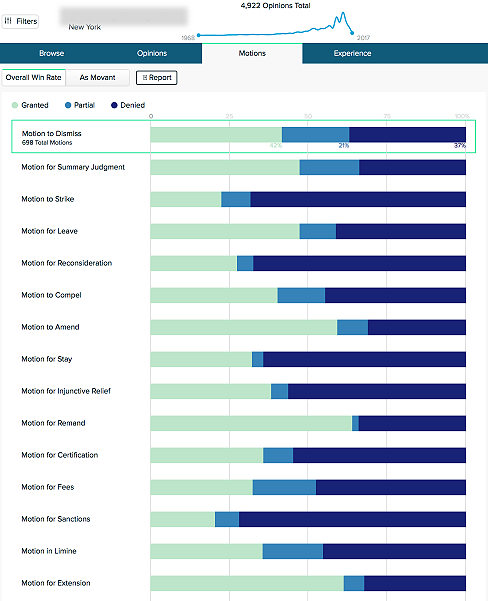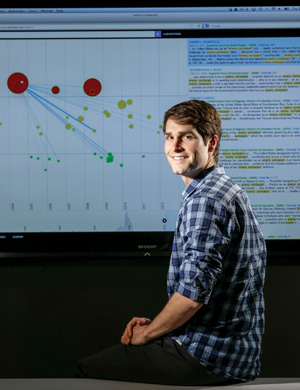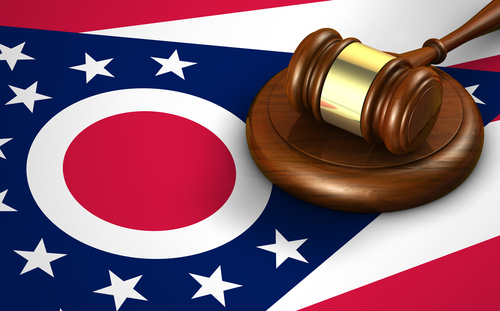Ravel Law unveils new tool that measures law firm success

A sample chart on the Ravel website shows motion success rates.
A courtroom batting average for law firms is one feature of a new analytical toolkit from the Ravel Law research firm.
On Wednesday, Ravel unveiled its Firm Analytics suite, which purports to rank law firms by case volume and winning percentages across practice areas. Cases are categorized in a state and federal ruling database that Ravel created in partnership with Harvard Law School. Daniel Lewis, Ravel’s chief executive, says the search tools build on the company’s success in quantitative analyses of rulings, judges and jurisdictions.
“We’re taking the same approach to find out which firms are involved in these cases and what was the outcome,” Lewis tells ABA Journal in an interview. “This is a pretty new landscape. This is the first platform of its kind working with machine-learning to evaluate a specific topic area, practice area or plaintiff— any piece of the puzzle.”
Sample search results on the Ravel website include a bar chart displaying win-loss proportions for various types of motions, with a middle ground for split decisions. The presentation is similar to the Court Analytics tool that Ravel launched last December.
Law firms are compared directly in tables that rank the number of cases argued and percentages of wins, successful motions to dismiss and summary judgment findings. Lewis said in-house counsels can customize the search to gauge a firm’s expertise in a specific topic. “Understanding firms and evaluating their performance were needs that were not being served,” he says.

Daniel Lewis, Ravel Law chief executive. ABA Journal file photo by Tony Avelar.
Cases are classified in more than 30 practice areas. Ravel’s announcement included the top five law firms by case volume in five practice areas: administrative law (led by Gibson Dunn), antitrust (Jones Day), bankruptcy (Kirkland & Ellis), employment law (Littler Mendelson) and securities (Robbins Geller Rudman & Dowd).
Other features are geared toward law firms, with input from an advisory panel that includes representatives from DLA Piper, Debevoise & Plimpton, Greenberg Traurig and Hughes Hubbard & Reed. Lewis said he was surprised at the evaluators’ interest in ways a firm could research its own track record.
“For a young attorney who does not have institutional knowledge, that’s a really powerful accelerant,” he says. A custom installation integrated the case-law database with underlying memos and briefs in a firm’s private document management system.
Customers can subscribe to rating and visualization tools, but the Ravel website includes a public case search. Lewis says the Harvard Case Law Access project is largely complete, covering recent case law in every state. Coverage of state case law before 1950 is due to be completed this fall.
See also:
ABA Journal: “As governments open access to data, law lags far behind”
ABA Journal: “Digitization of Harvard case law library will show court patterns and trends”
ABA Journal: “Visual law services are worth a thousand words—and big money”



